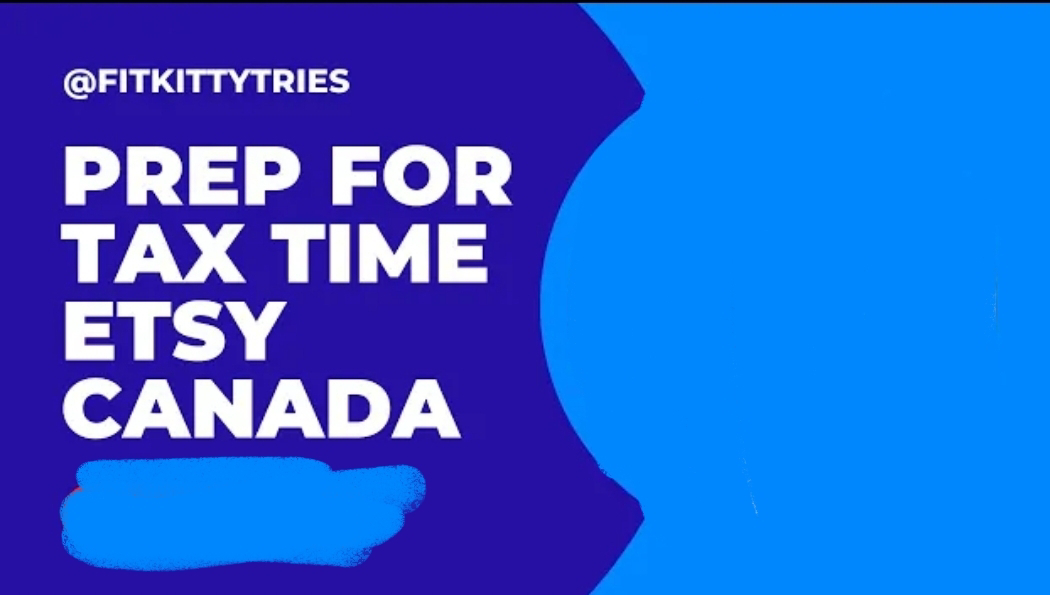Complete Guide to Canadian Taxes for Etsy Sellers: GST, PST, and HST Explained
Hey, kittens! It's Cat from FitKitty Tries, and today we’re diving into a crucial topic: Canadian taxes, specifically for Etsy sellers. I live in British Columbia, and with my fiscal year ending in August, it’s time to prepare my GST return for the first time. If you're a Canadian small business owner navigating Etsy's tax policies, this guide is for you.
Overview of GST Returns for Canadian Etsy Sellers
Running an Etsy store in Canada can be confusing, especially when it comes to taxes. Etsy made significant changes to its tax collection policies in July 2022, complicating the process for Canadian sellers. Here’s a detailed breakdown to help you understand your tax obligations and streamline your GST return preparation.
Key Changes and Requirements
1. Who Needs to Report GST?
- If your small business earns less than $30,000 in revenue annually, you don't need to collect or remit GST.
- Once your revenue exceeds $30,000, you must register for a GST number and start remitting GST to the Canada Revenue Agency (CRA).
2. Provincial Sales Tax (PST)
- Each province in Canada has different tax rates. Most use GST or HST (Harmonized Sales Tax), which combines GST and PST.
- For British Columbia, Manitoba, and Saskatchewan, you need to remit PST separately to the respective provinces.
3. Etsy's Role in Tax Collection
- Etsy collects and remits PST for you if you sell on their platform, simplifying this aspect of tax reporting.
- However, if you are registered for GST, Etsy will not collect GST on your behalf. Instead, you need to incorporate GST into your product prices and remit it yourself.
Detailed Steps for GST Return Preparation
1. Pull Necessary Reports
- Identify reports that show your total sales, GST collected, and Etsy fees.
- Download your monthly statement from Etsy, which breaks down the taxes and fees charged.
2. Understanding Etsy Fees
- Listing Fees: $0.20 USD per listing, with applicable GST and PST added.
- Payment Processing Fees: 3% of the total sale amount plus a fixed fee.
- Transaction Fees: 6.5% per item and shipping cost.
3. Tax on Etsy Fees
- Etsy charges GST/PST/HST on listing, processing, and transaction fees.
- Ensure you account for these taxes when preparing your return.
4. Off-Site Ad Fees and Currency Conversion Fees
- Etsy may charge additional fees for off-site ads and currency conversion (2.5%).
- These fees also include applicable taxes.
5. Etsy's Tax Policies
- If you’re not registered for GST, Etsy collects GST on your sales.
- Once you register, Etsy expects you to include GST in your listing prices, making it your responsibility to remit it.
Practical Tips
1. Use a Spreadsheet
- Create a spreadsheet to track your sales and taxes. Filter by Canadian orders and provinces to calculate the GST you need to remit.
- This helps automate the process and reduces manual errors.
2. Consult a Tax Specialist
- While this guide provides a basic overview, consulting with a tax professional ensures you meet all legal obligations and optimize your tax reporting.
Conclusion
Navigating taxes as a Canadian Etsy seller can be challenging, but understanding these fundamentals will make the process more manageable. Remember to stay updated with Etsy’s policies and provincial tax regulations.
If you have any questions or need further clarification, feel free to drop a comment below. I hope this guide makes your tax season a bit easier. Thanks for watching!



Comments
Post a Comment